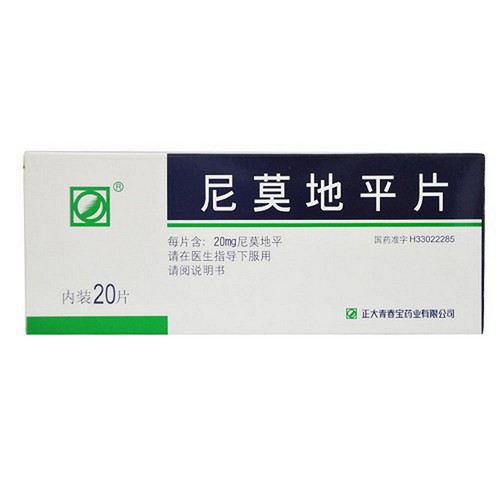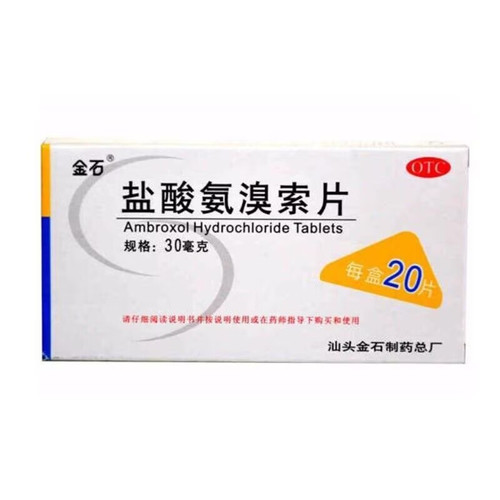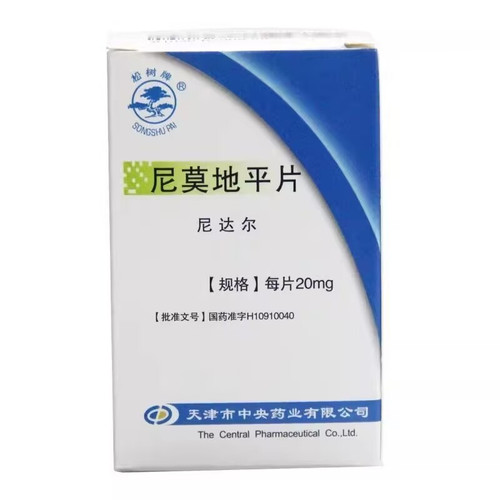Product Overview
[Drug Name]
Generic Name: Nimodipine Tablets
Trade Name: Nimotong
English Name: Nimodipine Tablets
Chinese Pinyin: Nimodiping Pian
[Ingredients]
Nimodipine. Its chemical name is: 1-methylethyl-2-methoxyethyl, 1,4-dihydro-2,6-dimethyl-4-(3-nitrophenyl)-3,5-pyridinedicarboxylate.
[Properties]
Yellow film-coated tablets.
[Indications]
Indicated for cerebral vasospasm after subarachnoid hemorrhage of various causes and for improving blood circulation during the recovery period of acute cerebrovascular disease.
[Dosage and Administration]
1. Ischemic cerebrovascular disease: Oral, 30-120 mg (1.5-6 tablets) daily, divided into 3 doses, for one month.
2. Migraine: Oral, 40 mg (2 tablets) three times a day, for a course of 12 weeks. The efficacy rate is 88%, with approximately half of cases achieving near-complete recovery or significant improvement. It can reduce pain intensity, frequency, and duration for vascular, tension, cluster, and mixed headaches, and prevent the onset of premonitory symptoms.
3. Cerebral vasospasm caused by subarachnoid hemorrhage: Oral administration: 40-60 mg (2-3 tablets) three to four times daily for a course of three to four weeks. For patients requiring surgery, discontinue medication on the day of surgery but continue thereafter.
4. Sudden deafness: 40-60 mg (2-3 tablets) daily, divided into three doses, for a course of five days. Three to four courses are generally required.
5. Mild to moderate hypertension: This medication is preferred for patients with hypertension and the aforementioned cerebrovascular diseases. Oral administration: Initially, 40 mg (2 tablets) three times daily, with a maximum daily dose of 240 mg (12 tablets).
[Adverse Reactions]
Clinical experience has shown that approximately 11.2% of patients with subarachnoid hemorrhage experience adverse reactions when treated with nimodipine. The most common adverse reactions include: 1. Decreased blood pressure, the degree of which is dose-related. 2. Hepatitis. 3. Skin irritation. 4. Gastrointestinal bleeding. 5. Thrombocytopenia. 6. Occasional transient dizziness, headache, flushing, vomiting, and gastrointestinal discomfort.
[Contraindications]
Contraindicated in patients with severe liver impairment. Concomitant use of nimodipine with antiepileptic drugs is not recommended. Nimodipine can be secreted into breast milk and should not be used by breastfeeding women.
[Precautions]
1. Use with caution in patients with cerebral edema and increased intracranial pressure. 2. Nimodipine's metabolites are toxic and should be used with caution in patients with impaired liver function. 3. This product can cause a decrease in blood pressure. In patients with hypertension and subarachnoid hemorrhage or stroke, it is important to reduce or temporarily discontinue antihypertensive medications or reduce the dosage of this product. 4. Pseudo-obstruction may occur, manifested by abdominal distension and decreased bowel sounds. If these symptoms occur, the dosage should be reduced and observation should be maintained. 5. Avoid concomitant use with beta-blockers or other calcium antagonists.
[Use in Special Populations]
Precautions for Children:
Unknown.
Precautions for Pregnancy and Lactation:
1. The drug is secreted into breast milk and should not be used by breastfeeding women. 2. Animal studies suggest that this product is teratogenic.
Precautions for Elderly:
Unknown.
[Drug Interactions]
1. Concomitant use with other cardiovascular calcium antagonists may increase the efficacy of other calcium antagonists. 2. When nimodipine 90 mg/day is used in combination with cimetidine 1000 mg/day for more than one week, nimodipine plasma concentrations may increase by 50%, which may be related to the inhibition of nimodipine metabolism by cimetidine in the liver by cytochrome P450.
[Pharmacological Actions] Nimodipine is a Ca2+ channel blocker. Normally, smooth muscle contraction depends on the influx of calcium (Ca2+) into the cell, which triggers a depolarization of the transmembrane current. Nimodipine effectively blocks this influx and inhibits smooth muscle contraction, thereby relieving vasospasm. Animal studies have shown that nimodipine's effect on cerebral arteries is significantly stronger than on arteries elsewhere in the body. Furthermore, due to its high lipophilicity, it readily crosses the blood-brain barrier. When used to treat subarachnoid hemorrhage, cerebrospinal fluid concentrations can reach 12.5 ng/ml. This suggests that it could be clinically used to prevent vasospasm following subarachnoid hemorrhage. However, its mechanism of action in humans remains unclear. Furthermore, it has been shown to protect and promote memory and intellectual recovery. Therefore, it selectively acts on cerebral vascular smooth muscle, dilating cerebral blood vessels and increasing cerebral blood flow, significantly reducing ischemic brain damage caused by vasospasm.
[Storage]
Protect from light and store in a sealed container.
[Strength]
30 mg
[Packaging]
30 mg x 20 tablets
[Expiry Date]
36 months
[Approval Number]
National Medicine Standard H20003010
[Manufacturer]
Bayer Healthcare Co., Ltd.







